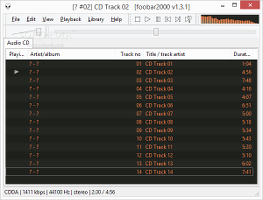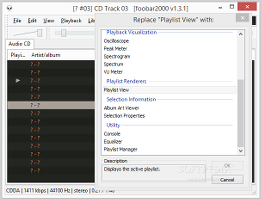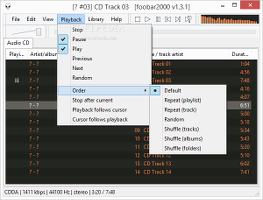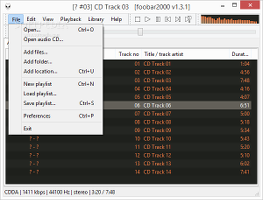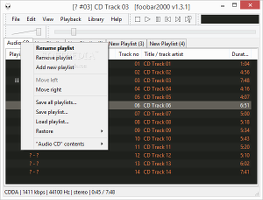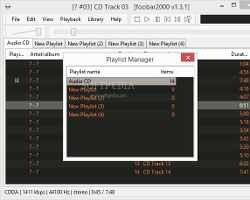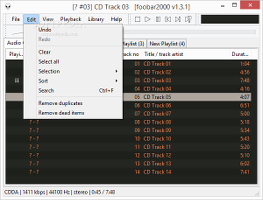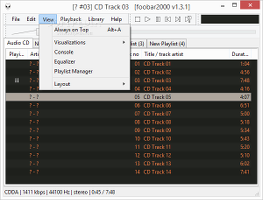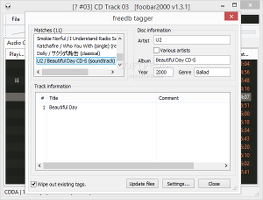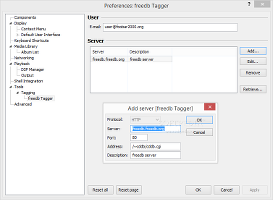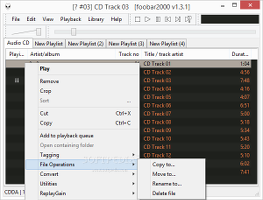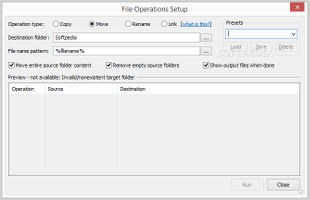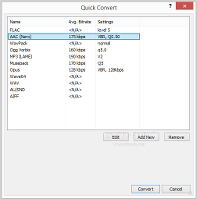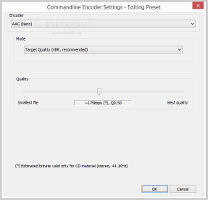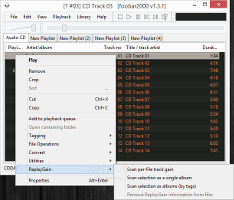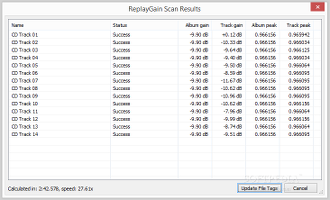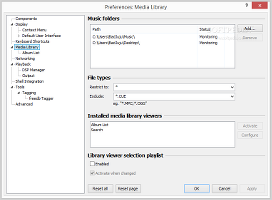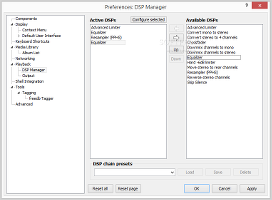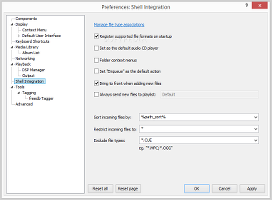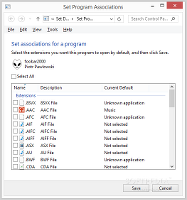Those who like to take their time exploring an audio player and discovering the flexibility its skill set preserves have undoubtedly come across foobar2000 at one point or another in their digital lives.
With the colorful connotation hinted by its name, foobar2000 has captured the attention of a large number of audio player enthusiasts even since its initial release over 12 years ago, thanks to highly customizable options that allow them to design a unique application to suit their exact tastes, all while remaining light on resources consumption.
NOTE: foobar2000 was tested on Windows 8.1 Pro 64-bit. You can also read our previous review.
The package comes with an installer and portable version. The latter option allows users to directly run foobar2000 on any machine from a mass storage device without adding information to the Windows registry. However, it does not support file associations.
Apart from the core files, the kit features support for audio CDs, album lists, standard DSPs, equalizer DPS, ReplayGain scanner, converter, file operations, archive reader, and online tagger. Any of these components can be excluded from the setup, which unwraps very fast.
Unlike many other audio players that go for the glamorous interface, foobar2000 takes a minimalistic and monochromical approach by default. At the initial startup it is possible to quickly personalize the main layout (e.g. album list and properties, slim view and tabs), colors (e.g. gray orange) and playlist layout (e.g. group by albums).
Advanced users can activate layout editing mode to right-click various UI elements and view available options to replace them with, or create a virtual scratchbox for testing various combinations of UI elements. The playback queue's context menu is customizable in terms of entries to display.The standard audio player controls shared between most apps which are also available here include pausing and stopping playback, going to the next or previous track in the list, adjusting the volume, seeking a particular position in the stream, and enabling shuffling or repeating mode (for the current or all tracks). The program can be set to stop playback after the current item.
Audio tracks can be added by pointing out files, entire folders with files, full paths, as well as drives with audio CDs. Foobar2000 offers support for a wide range of popular audio formats, including AIFF, AU/SND, CDA, FLAC, Matroska audio files (MKA), MP1, MP2, MP3, Raw ACC, WAV and WMA, as well as playlists like M3U, M3U8 and PLS. Different playlists can be created in multiple tabs, thus allowing users to easily toggle between them. These can be renamed and saved to FPL, M3U or M3U8 format. Furthermore, existing playlist contents can be added to the playback queue with the click of a button. Playlists may also be managed from a separate window (“Playlist Manager”).Several basic but practical editing options are put at users' disposal for playlists. They can remove or crop selected files, sort them by various criteria (album, artist, file path, title, track number, reverse, randomize, user-defined pattern), remove duplicates and dead tracks (e.g. zero-length), and use a search function.
When it comes to viewing options, the frame can be set to stay on top of other windows until further notice, while program activity can be inspected in a console window and exported to a log file for further scrutiny. An equalizer may be enabled with customizable settings which can be saved as presets and later loaded. As for visualization, the utility bundles five types: oscilloscope, peak meter, spectrogram, spectrum and VU meter. The supported MP3 tag types are ID3v1, ID3v2 and APEv2, which can be automatically obtained from the free online music database called Freedb.org, or manually edited. Additional online databases can be added from the “Preferences” area. It is also possible to attach pictures (JPG, JPEG, PNG) to the front or back cover, disc, icon or artist to one or multiple selected tracks, as well as manage edit or remove existing ones. foobar2000 lets users remove tracks from the disk, rename them according to a user-defined pattern, as well as to copy or remove them to other locations while moving the entire source folder content and removing empty source folders. All these file operations can be performed in batch mode and without leaving the app's interface. As far as format conversion goes, users have the possibility to quickly transform files into AAC (Nero), Opus, Musepack, WavPack, MP3 (LAME), FLAC, Ogg Vorbis, Wave64, WAV, AU/SND or AIFF files, while specifying preferred audio settings such as bit depth, dithering mode, encoder, compression mode, hybrid lossy mode, and quality.Other utilities of foobar2000 are capable of adding headers with the correct duration information to MP3 files with variable bit rates, rebuilding MP3 streams by getting rid of any irrelevant data in an attempt to reduce file size, as well as editing embedded CUE sheets.
Thanks to ReplayGain, the program can scan selected items as independent tracks, one album, or one or more albums (according to tags), in order to determine the album and track gain and peak, which can be then updated to the tags to normalize the volume level. It is possible to apply the track or album gain directly to the file content (requires codecs), as well as to remove ReplayGain information altogether.The Media Library component monitors selected folders for music while optionally applying file masks (restrictions and exclusions). These locations can be used to view all songs in an album list, sort them (by folder structure, album, artist, genre, year, artist/album) and automatically create playlists based on this information, as well as to easily search for media.
There are many DSPs applicable to playback and these include an advanced limiter, channel conversion, crossfader, resampler and silence skipper, among others. As for output preferences, it is possible to change the audio device, adjust the buffer length, and tweak a fade-in and fade-out effect by setting accurate times. File type associations are easily manageable. foobar2000 can be set as the default CD player and integrated into folder context menus. The supported file formats are automatically registered at startup but this option can be disabled. In addition, specific file types can be excluded from shell integration, while incoming files can be restricted to particular masks.The Good
The program features support for plugins (better known as foobar2000 components) that can be downloaded from the developer's website to enhance functionality. Some of them are capable of reading files from 7-Zip archives, burning audio CDs, analyzing BPM, and verifying media for decoding errors, among many others.
Profiles with custom settings can be created and later applied to file operations and conversion (command-line encoder options).
System tray integration is possible by creating an icon (preset or user-defined) that shows balloon tooltips on song change and general notifications, as well as by minimizing foobar2000 there.
Keyboard shortcuts are supported and can be remapped for any action (including global hotkeys).
All settings can be restored to default. Apart from checking for program updates, foobar2000 can also look for component updates.
The Bad
Novice users may be easily distraught by the seemingly ultra-simplistic interface, at least before learning that it can be skinned with numerous themes available online. Although foobar2000 can be used as a straightforward audio player, it requires some time to get familiarized with its commands in order to enjoy its powerful and versatile features, mostly provided by the downloadable plugins.
 14 DAY TRIAL //
14 DAY TRIAL // 